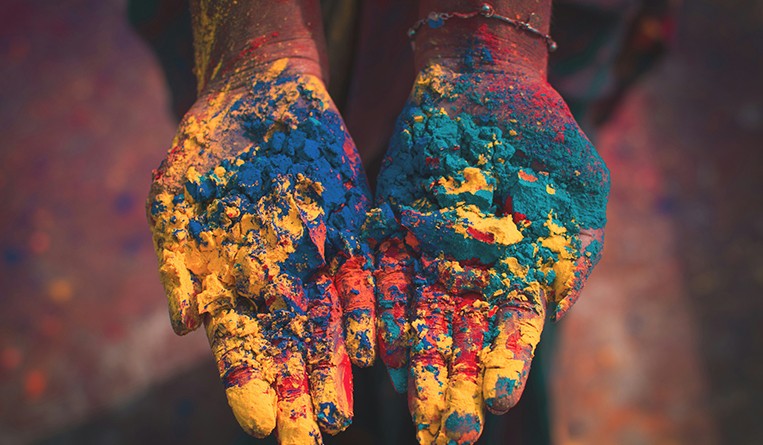Indian trademark updates from the year gone by
31 December 2023

Rulings on intermediary liability, non-traditional marks, NFTs and personality rights were all big news in India in 2023. Bisman Kaur reports from Gurugram.
Keyword advertising and intermediary liability
The ever-upward trajectory of the online business model in India (and elsewhere) has meant that one of the issues that is arising before the courts repeatedly is that of keyword infringement. A key decision on the subject was passed on August 10, 2023, in Google LLC v. DRS Logistics (P) Ltd. & Ors. and Google India Private Limited v. DRS Logistics (P) Ltd. & Ors. [2023 SCC OnLine Del 4809] by a Division bench of the Delhi High Court. In 2022, several right holders claiming infringement/unfair advantage had, in the first instance, managed to secure interim injunctions against third parties who were using their registered marks as keywords to generate sponsored ads that appeared alongside the registered proprietors’ listings on the search results page. Directions were also issued to Google to ensure that such marks were not used as keywords on its ads service. However, affected parties, including Google, had challenged these interim orders before a larger bench (Division Bench) of the Delhi High Court citing a myriad of defences, including:
-
Consumers do not encounter the proprietary trademarks in rival third-party listings on the search results page;
-
Prevalent global industry practice;
-
Online consumers are a discerning class who do not click and make purchases on the basis of the first link that pops up in the search results; and
-
The role of competition in the realm of online advertising.
The Division Bench emphatically ruled that though use of a trademark as a keyword to trigger display of advertisements constitutes use of a mark in advertising by both the advertiser and Google, such use does not inherently infringe unless the ad in question leads to confusion, unfair advantage, dilution, or compromise of the trademark in question. Thus, a finding of infringement would turn on the specific facts of each case.
Parallels were drawn between digital and physical markets with the court noting that there is “nothing illegal if an entity engaged in commerce puts its advertising billboard next to an exclusive store of its competitor. It is also permissible for a competitor to buy shelf space next to competing goods of a well-known brand”. The court distinguished between initial interest and the doctrine of initial interest confusion, noting that the latter requires a “real likelihood of confusion” to return a finding of trademark infringement. To quote the Division Bench, “sponsored links may be relevant to the search query and what the internet user is searching for. It may thus generate interest that would obviously not constitute infringement of a registered trademark...if there is no deception or confusion.” The test of average consumers with imperfect recollection to adjudge likelihood of confusion would not be applicable here in its rudimentary sense – the test is to be viewed from the perspective of a person who is aware of how search engines function. A typical user does not expect search query results to offer a clear answer; rather, he or she is well aware of the nuances of sponsored ads that outline choices and may, in fact, be looking for alternatives.
Court analysis also focused on Google’s active role in promoting use of trademarks as keywords, its monetization of the keyword suggestion tool and engagement in selling trademarks to advertisers in the form of keywords. This is why Google’s use of trademarks in relation to keywords constituted “use of the marks in advertising” under the trademark statute and ultimately compromised its claim to safe harbour immunity (offered to intermediaries under Section 79(1) of the Information Technology Act). Hence, if there is infringement in a particular case, Google would not be entitled to the defence of an intermediary.
The verdict’s impact (endorsed in several subsequent decisions including the Supreme Court of India's March 7, 2024, verdict in MakeMyTrip (India) Private Limited v. Google LLC, 2024 SCC OnLine SC 266) lies in assessing the overall effect of an advertisement using trademark keywords, rather than a per se infringement finding. The court’s focus on user intent behind search queries and the role of search engines contributes a progressive angle. The ruling reinforces competitive advertising within the limits prescribed by law and highlights the evolving nature of trademark jurisprudence in the digital realm.
Non-traditional marks
Branding language employing unusual trademark elements, instead of the more conventionally used words and images, is a striking way to make a brand stand apart from its competitors and can emerge as a powerful indicator of origin. However, obtaining statutory protection for such non-traditional marks is more onerous as compared to traditional marks. The evidentiary burden of proving distinctiveness is also much higher when it comes to enforcing proprietary rights in such marks. In both instances, long use and proof of acquired goodwill and reputation are a sine qua non.
In early 2023 in (Alphavector India Pvt. Ltd. v. Sach Industries & Ors. [CS (COMM) 691/2022]), the High Court of Delhi reiterated these principles in connection with numeral trademarks.
Alphavector India Pvt. Ltd. (the plaintiff), engaged in the business of manufacture and sale of bicycles and accessories, was the registered proprietor of several marks featuring the number ‘91’ in conjunction with words such as ‘Outdoors’, ‘Cares’, ‘Vector’ and a ‘V’ logo which it had been using since 2020.
Sach Industries (the defendants) started using the mark ‘Ninety Nine’ and ‘99’ on their Facebook page in July 2021 which led the plaintiff to file a lawsuit alleging that while they did not yet possess a registration for the mark ‘91’ per se (applications filed were pending), the defendants’ use of the ‘99 marks’ on identical products amounted to infringement and passing off of the plaintiff’s registered composite trademarks wherein ‘91’ was a dominant element. The defendants countered that they were using the marks ‘Ninety Nine’ and ‘99’ in conjunction with the words ‘Only’ and ‘Sachin’ and were, in fact, prior users of such marks.
Analyzing the invoices filed by the defendants to support prior use, the judge opined they did not inspire confidence. On infringement, both ‘91’ and ’99’, whether used in word or numeral format, were found to be arbitrary in respect of bicycles and entitled to protection under the Trade Marks Act, 1999. However, per the court, use of the ‘99 marks’ without any plausible explanation, coupled with the fact that the first digit of the rival marks was ‘9’, clearly established the defendants’ mala fide intent to ride upon the goodwill and reputation vesting in the plaintiff’s marks. Prima facie it appeared that the plaintiff had acquired goodwill in its mark within a short period from 2020. The court also took note of the nature of the products and observed that a large number of the people who bought the bicycles may have been deceived into believing that they originated from the same manufacturer and that the marks Ninety Nine/99 and Ninety One/91 were series marks. Accordingly, it restrained the defendants from using the ‘99 marks’.
There have been prior decisions upholding the arbitrary character of numeral trademarks. In assessing the question of being ‘arbitrary’, courts in India have paid attention to the nature of goods and services being sold/offered under the numeral trademark, as well as the presence of third parties using deceptively similar numeral trademarks.
Take the case involving a lollipop sold in the shape of a rose (M/S Suman International & Anr. v. Mahendra Gulwani & Anr. FAO (COMM) 199/2021& CM APPL. 44021/2021) where the Delhi High Court set aside the interim injunction granted by the Commercial Court in favour of the plaintiff. While setting aside the injunction, the court stated that though the plaintiff held a trademark registration for the ‘shape of a rose’ for lollipops, and claimed use of it since 2016, it was not able to prove acquired distinctiveness, and that use of the shape of a flower, including a “rose”, for confectionary was common. Per the court, it has to be shown that the shape is not the generic shape of the product but rather a distinct shape which associates the mark with the source without adding anything further like a name or a logo. The shape must have lost its inherent or generic meaning and ought to have acquired a secondary connotation, i.e. the standard of distinctiveness necessary to be acquired would be quite high. Also, registering one shape of a rose flower does not give protection over all variations of the shape with respect to all flowers and in its view, the shapes used by the rival parties were not similar.
The facts of this case were contrasted with those in Ferrero Spa and Ors. v. Mr. Kishor J. Salvani and Ors. CS (COMM) No. 966/2018 where the court had restrained the defendant from manufacturing / marketing / selling confectionery in the shape of an egg. In this case, the plaintiff was found to have prima facie established that because of long use over several decades, the egg shape for chocolates had acquired a secondary meaning and was identified exclusively with its products, i.e. Kinder Joy chocolates.
NFTs and personality rights
A hitherto unexplored theme in Indian jurisprudence – NFT Digital Player Cards – was the subject of an April 26, 2023, decision by the Delhi High Court in a suit filed alleging unfair competition (including passing off) and breach of personality rights (Digital Collectibles Pte Ltd & Ors. v. Galactus Funware Technology Private Limited & Anr. CS(COMM) 108/2023).
Plaintiff No. 1 owned an online marketplace where third-party users could sell, purchase and trade officially licensed digital player cards featuring the name, photograph and personality attributes of cricketers. Further, plaintiff No. 1 had spent significant resources to enter into agreements with several well-known cricketers to exclusively use inter alia their names and photographs. The digital player cards also functioned as non-fungible tokens (NFTs) capable of being sold, purchased and traded for real money on plaintiff No. 1’s Rario website via the website’s private blockchain. In general, the price of a digital player card for any player depended on the relative demand and supply of that card at a particular time and was not linked to real-world performances of the player in the cricket match, although better real-world performance increased a player’s popularity and caused demand to rise for their digital playing cards.
The defendants had a similar business model that they operated through the Striker website and app. However, they had not entered into any authorization agreements with cricket players and their digital player cards (also NFT-enabled) included artistic drawings, and not the photographs, of players.
Per the plaintiffs, all sports players have limited playing time and therefore, a right to monetize all aspects of their personality. Though the nature of artistic work underlying the defendants’ NFT was identical across all digital players cards, the price of the cards was different implying that the price was not a function of artistic work but the personality of the player. Thus, the defendants’ profit from the trade of their cards without authorization from the players amounted to a breach of personality rights.
According to the court, in the absence of a specific statute that deals with publicity or personality rights in India, the main issue before it was to determine the contours of the right of publicity. In this regard, a detailed examination was undertaken of U.S. decisions and common law jurisprudence as well as prior Indian judgments.
First, the court stated that to determine infringement of the right of publicity, the principles applicable are the very same ones that apply to the tort of passing off – goodwill of a celebrity, misrepresentation, and damage. Thus, where the identity of a celebrity is used to promote a product or to show/imply its endorsement without the celebrity’s consent, it amounts to misrepresentation, makes consumer confusion likely and leads to a finding of infringement. However, in a scenario where various online fantasy sport (OFS) platforms are using the names, images and publicly available information of celebrities for the purposes of identification of the players for playing a game, the possibility of consumers mistakenly assuming that a particular OFS platform is being endorsed by a particular player is obviated.
Second, the right to publicity is not an absolute right and must be weighed against the right to freedom of speech and expression enshrined under Article 19 of the Indian Constitution. Information in the public domain – such as a player’s on-field performance statistics – is fair game for anyone (news reporters, biographers, etc.) and cannot be owned by anybody, including the players themselves. Further, it is a settled position of law that protection under Article 19 extends to commercial speech. In this context, the present defendants’ use of players’ names, images and statistics for commercial gain would qualify as protected free speech.
Third, the court took up the point that plaintiff No. 1 did not have any grievance with regard to player information being used by the defendants in an ordinary OFS game – it primarily wanted to restrain the defendants from capitalizing on trades of its unauthorized NFT digital player cards. Per the court, trading of players is a part of all professional sporting leagues and the defendants’ aim was to enable a user to wear the hat of a team manager and trade players. Even though, in theory, trading the digital player cards was possible without playing the defendants’ game, the NFT player cards were primarily in-game assets meant to enhance user experience. Also, there was no difference between an OFS game with NFT-enabled player cards and an ordinary OFS game insofar as use, rather misuse, of the name or artistic impression/photograph of a player was concerned. Re plaintiff No. 1’s example of the NFT digital trading card of famous footballer Erling Haaland being sold for a huge amount, it was pointed out that the said card was an officially licensed card. The defendants’ website clearly stated they had no affiliation with any players and, unlike plaintiff No. 1, made no claim of selling or trading in authorized or officially licensed collectibles. In the opinion of the court, a collector of a player would be less inclined to buy the defendants’ card as memorabilia when other NFTs using the actual photograph/video moments of sportspersons were available for purchase on plaintiff No. 1’s platform.
Conclusion
As these cases bear out, trademark jurisprudence in India has been quick to catch up with the demands of modern commerce and technology and testifies to a maturing IP ecosystem in the country.








